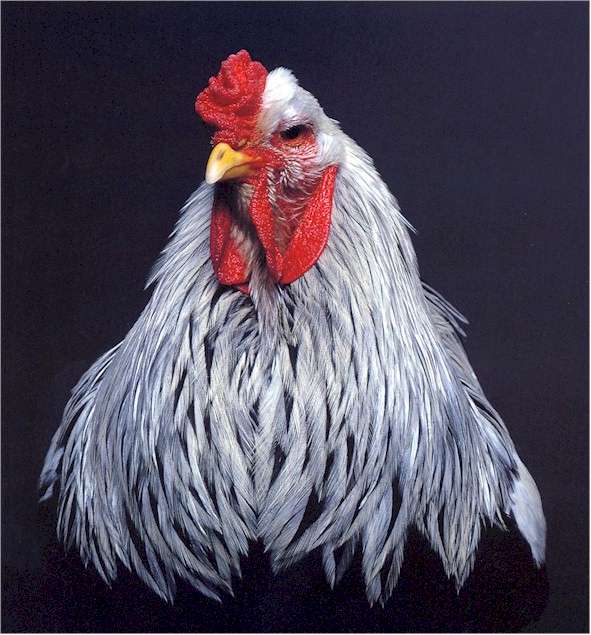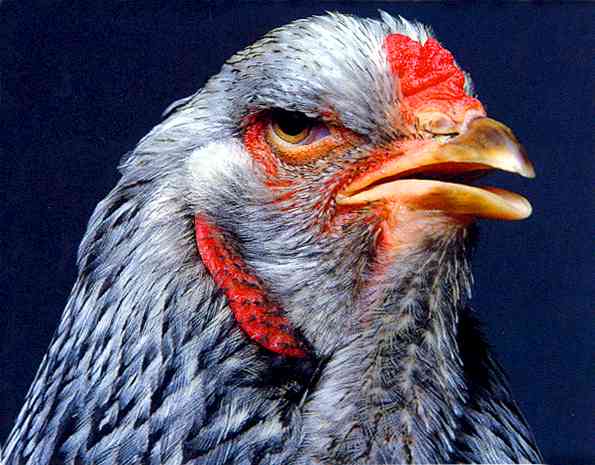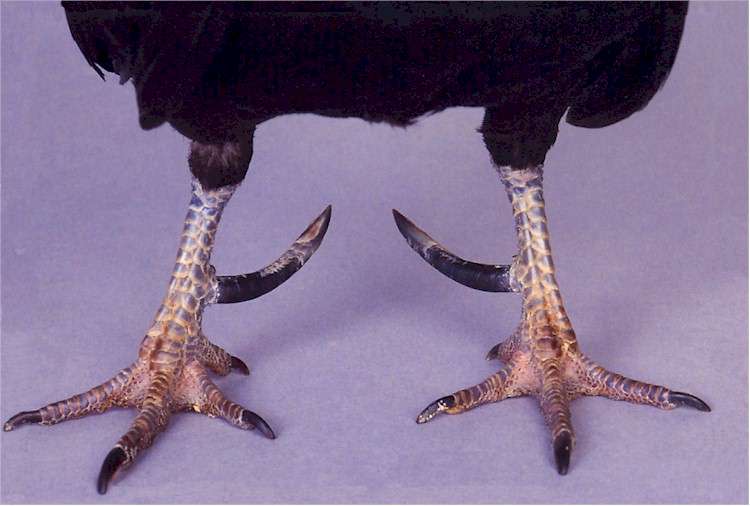Something to Crow About
Those Are Chickens?!?Chickens - animals you eat before they're born and after they're dead. - Somewhere on the internet Technically, the word chicken is the plural of chick, just as oxen is the plural of ox. However, as it is common usage to write or speak the word chicken for the singular form and to add an s for the plural. The term fowl includes many other types of birds, such as guinea fowl and peacocks, and the word poultry embraces other domestic fowl, such as ducks, geese, and turkeys. Young female chicken are called pullets and young males are called cockerels. Chicken have been around since at least 3000BC and are thought to have originated in India. The first known major poultry show was staged in 1845 in London. More than 500 different breeds have been recorded to date though, at least in theory considering all the colour variants of all the different breeds, more than 7,000 are possible. Breeders appear to have fast-forwarded evolution so that "survival of the fittest" has been replaced with "survival of the prettiest" or even "survival of the strangest."
Photo Source: adapted from a computer rendering at lloyd1.com/will
The Egg Came First...
Vladimir Kush
BrahmaBrahma have great height and calm dignity. Good Brahmas are beautiful, stately birds. Their large size and gentle nature combined with intricate color patterns makes them favourites for the country estate. The Brahma's appearance in the showroom never fails to command the admiration of one and all. These qualities have made them a favourite with showmen and fanciers. Their small comb and wattles, together with profuse feathering and well feathered shanks and toes enable them to stand cold temperatures very well, however their relatively slow rate of growth and long time required to reach maturity have caused them to be passed by as a commercial fowl.
Brahma Dark rooster
This is his lovely wife, a Brahma Dark hen
Old English Game BantamBantam Island in the Dutch East Indies was a meeting point for the trade routes between Asia and the western world. The native fowl of the regions were used by the sailors as a source of meat and eggs during their voyages. At the time it was common to call any small birds “bantams” regardless of whether they originated from the Bantam islands or not. Old English Games are strictly an ornamental fowl. They are the modern day descendants of the ancient fighting cocks. They are associated with England but their heritage is almost worldwide and they have changed little in shape or appearance in more than 1,000 years. A small, tightly feathered bird, they are very hardy, extremely active and very noisy. Old English have figured in the development of many other breeds. The mature cocks should be "dubbed" (have the comb and wattles removed) with a characteristic cut (this is in keeping with their heritage). They are capable of considerable flight and may revert to a feral (wild) state in some areas. They are the domestic breed most like the wild jungle fowl in appearance.
Old English were once bred for fighting and are still often aggressive Source: a fascinating coffee-table-type book called Extraordinary Chickens by Stephen Green-Armytage. The book had dozens of pictures of - well - extraordinary chickens. For more pages of photos of unusual chickens, please see the preceding page, This Doesn't Fly (especially the bottom article, "Hairless Joe Chicken") and the following two pages, Beauty Parlour Chicks and You Elegant Fowl. Some information on the chicken pages was taken from ansi.okstate.edu/poultry/chickens and honoluluzoo.org/bantam_chicken.htm.
For more on animals, including reptiles, crustaceans, arachnids, insects, fish, birds, pets, livestock, rodents, bears, primates, whales and Wellington's waterfront, click "Up" below to
take you to the Table of Contents for this Animals section. |
 Animals
Animals Animation
Animation Art of Playing Cards
Art of Playing Cards Drugs
Drugs Education
Education Environment
Environment Flying
Flying History
History Humour
Humour Immigration
Immigration Info/Tech
Info/Tech Intellectual/Entertaining
Intellectual/Entertaining Lifestyles
Lifestyles Men
Men Money/Politics/Law
Money/Politics/Law New Jersey
New Jersey Odds and Oddities
Odds and Oddities Older & Under
Older & Under Photography
Photography Prisons
Prisons Relationships
Relationships Science
Science Social/Cultural
Social/Cultural Terrorism
Terrorism Wellington
Wellington Working
Working Zero Return Investment
Zero Return Investment



